Custom Part Creation
-
I'm interested in getting some prototypes of a part made but am not knowledgeable about the best way to go about doing this. The part is displayed in the image below and the two attached SketchUp files. Prototypes could be created out of any reasonably strong material. The spherical sockets are 1" in diameter. Anyone have any suggestions? Thanks, Fred
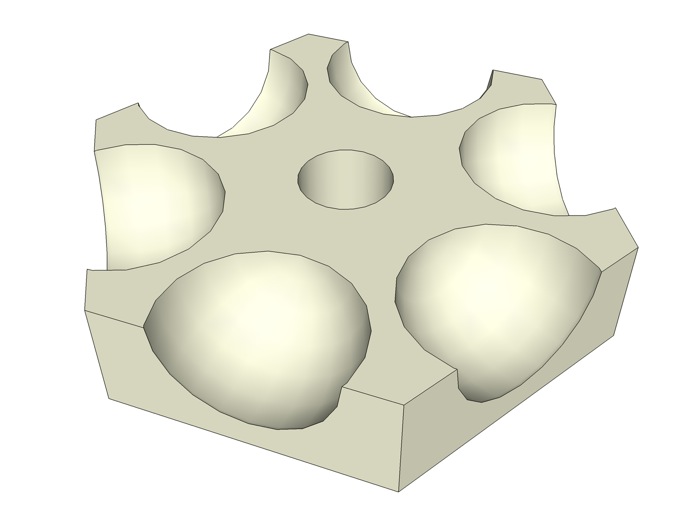
TIN Structural System Part.skp
-
It depends on the application its intended for really.
If its structural id suggest getting it CNCd by a local machine shop. If you can draw it up in a nurbs package (MoI, rhino, solidworks etc.) theres a good chance you could just send them the model in a format of their choice and theyll post you back the finished part. As for materials its probably best to speak to the shop about that, as its quite hard to say much about it without knowing the intended use and the facilities available.
The other option is to get it rapid prototyped. Again your best bet for this would be to find a local company who does this and then contact them for further info. Theres quite a wide range of rapid prototyping methods available, so again talk to the people who are going to be doing it. If your lucky they might accept part info in .stl format, which can be exported form SU with the help of an exporter form didier, oterwise youll have to remodel your part in a nurbs package.
Last thing, some shops might ask you for working drawings, so you might have to knock some of those up. Shouldnt be too bad considering the relative simplicity of your part.
-
Remus,
Thanks for the excellent ideas! A local machine shop. I suppose such things must still exist. I'll do some research.
Regards,
Fred
-
http://www.machineshopweb.com/shopsA2Z/nya2j.htm
Seems theres still a few

-
I cant remember if you can carve out 3d shapes at this place or just cut flat surfaces....but take a look.. http://www.ponoko.com
-
Dear Fred,
Seems a simple enough shape for a CNC milling machine.
If you want something quick but sturdy, then have it machined out of a structural plastic, such as an acetal homopolymer (see http://www.bayplastics.co.uk/acetal.htm). A ball cutter would make short work of the hemispherical sockets, and the whole thing would be straightforward to program into a CNC machine. Better still get, someone to model the item in SolidWorks, Inventor, Pro/E etc and then export using the correct file format so that it can be imported directly into the CNC's software.
You don't show dimensions, but stock sizes for acetal go quite large.
Regards,
Bob -
Just a quick question fred, is this a piece for your TIN roof structures? or perhaps some other swanky new project our working on?
-
Jason and Bob... Thanks for your suggestions. Helpful and appreciated. Bob, any thoughts on who might be willing to model this piece in one of the programs you mentioned? I'm on a Mac and I think all those programs are Windows based.
Remus... This is a prototype hub piece for my TIN roof structures.. nothing swanky.

Fred
-
Theres bound to be someone on here whod do it for you, just got to wait for them to reveal themselves.
If that doesnt work you might have some luck asking the machine shop to model it up, it doesnt seem to be to complicated a piece, and anyone whose got a reasonable amount of experience should be able to knock it up fairly quickly.
-
Dear Fred,
Would you be happy to post the skippy on the Forum? No need to dimension the model.
What do you have your units set to - Metric or Imperial?Regards,
Bob -
Bob,
Thanks for taking a look. It's attached to the original post in this thread.
Units are imperial. We are stuck in the mud here in the States.
F
-
Dear Fred,
Would you please check the dimensions of the attached model, which seems to be slightly different from yours. The original and the Inventor model (which is which) should be obvious (view with hidden geometry switched on). It might be due to the fact that Inventor exports with circles set to 40 line segments and so there is a visual difference. The screenshot shows the geometry for the hemispherical features. The dimensions shown are in mm.
Regards,
Bob
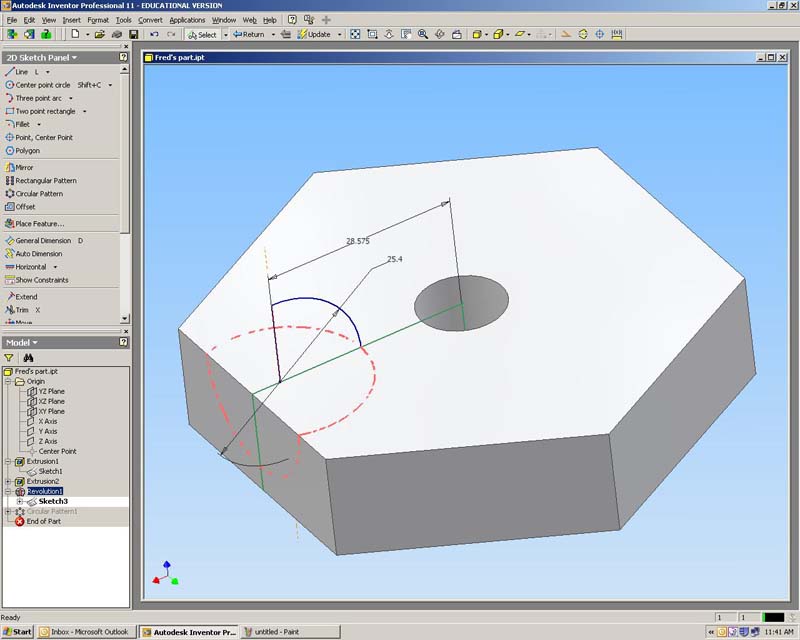
-
Bob,
Thanks so much for taking the time to help with this!
I believe, after comparing the two files, there was a problem with my original file in the sockets not being perfectly centered on the sides. If you take a look at the attached file you will see that in your model (on the bottom) the sockets are centered and in my original (on the top) they are not. Your version looks perfect!
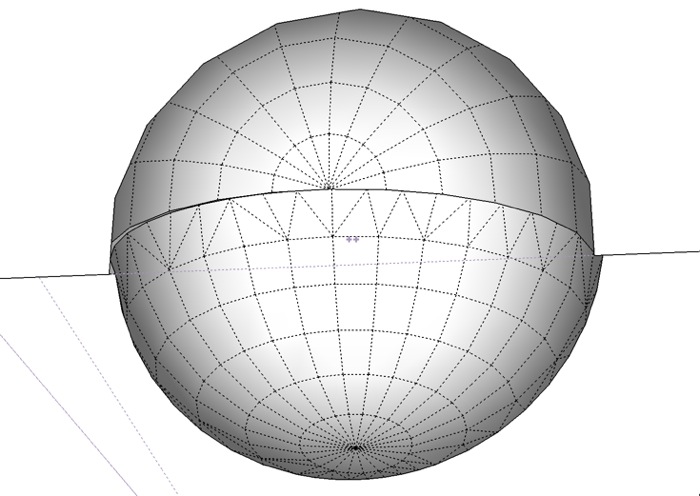
Fred
-
Dear Fred,
Okay, I will post the model tomorrow in a few file formats so that you can chose which one to use.
Regards,
Bob -
I have tried to upload files with different file extensions, but the system won't let me.
Could you send me a personal PM please.
Thanks,
Bob -
Dear Fred,
Here are the files in zipped format. The .ipt is the native Inventor file type. The others are typical file types for export/import into other CAD systems.
Hope this helps.
Regards,
Bob
-
Here is the .stl file. I have had to zip it in a folder as the Forum tells me that the extension .stl is not allowed.
Regards,
Bob
-
I'm working with a rapid prototyping service called Harvest Technologies (and Bob's model of the part) to make two copies of the part out of a Nylon/Glass-bead composite material. They are charging me $85 per unit for a total of $170. Since I'm new at this I'm not sure how this compares to other options (in particular to using a local machine shop with a CNC cutting device). The person I dealt with at HT was very helpful and took the time to answer all my questions. The parts should arrive next week and I'll provide an update with pictures then.
As always, any advice or suggestions much appreciated.
Fred
-
Looking forward to seeing the pictures. Oh, and when are you going to start building a house?
 cant be long at the rate your currently going...
cant be long at the rate your currently going... -
Remus... no house building for a long time ... if ever. This is still in the nature of a wacky research project.
Anyway, while I'm waiting for the prototype hub parts to arrive I thought I'd get to work on the socket and "spoke" parts. After getting a little nervous regarding some of the health issues related to working with PVC I've switched to bamboo for my spoke material. This was always my long-term plan but my miniscule research budget made PVC more appealing until the health concerns overrode the cost concerns.
I'm working with 1.5" diameter (roughly) bamboo. In the ends of the bamboo sections I'm glueing 1" diameter dowel lengths in which I've drilled a hole for 1/4" threaded rod. On one end of the threaded rod I've glued a 1" diameter wooden ball which will fit into a socket in the hexagonal hub part (in theory). The threaded rod is used so that the length of the spoke can be adjusted.
I'm trying to use materials that are inexpensive and might be readily available in a third-world country, with the exception, currently, of the hub part. I am trying to get a hold of some Ductal primarily to use as a roofing layer, but I also think it might be possible to use Ductal to make the hub part. If that is possible then all the parts could be made or purchased locally wherever bamboo can grow.
As always, comments and suggestions and fellow collaborators are welcome.
Some pictures of the socket/spoke parts.
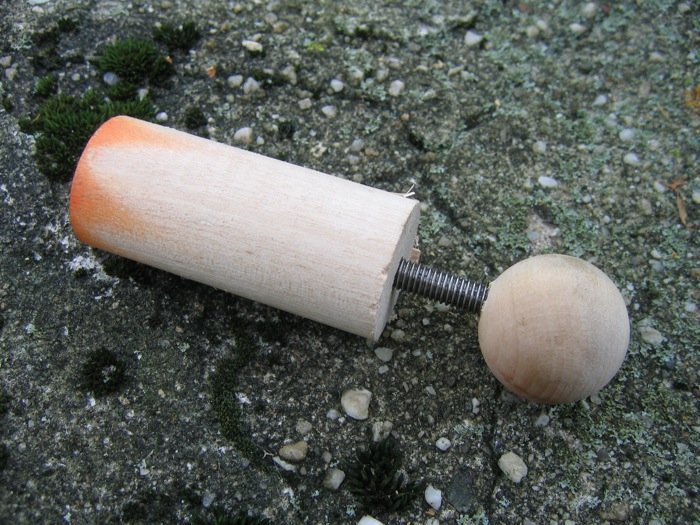
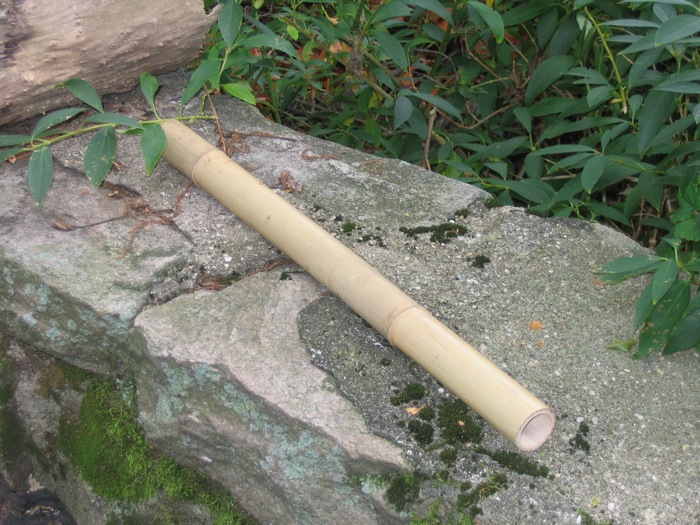
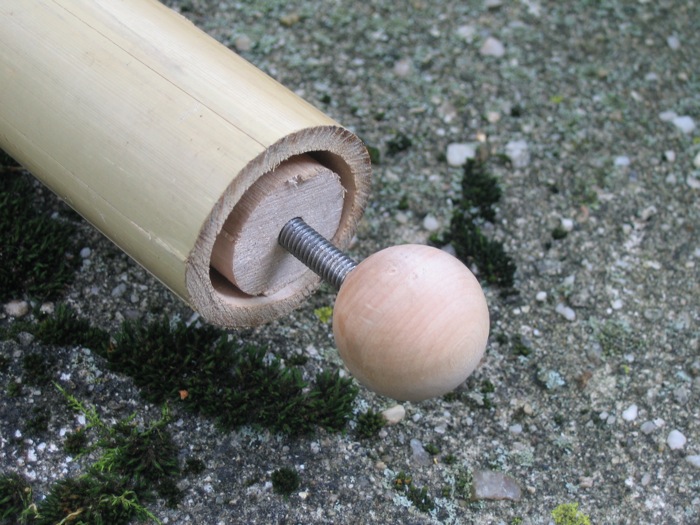
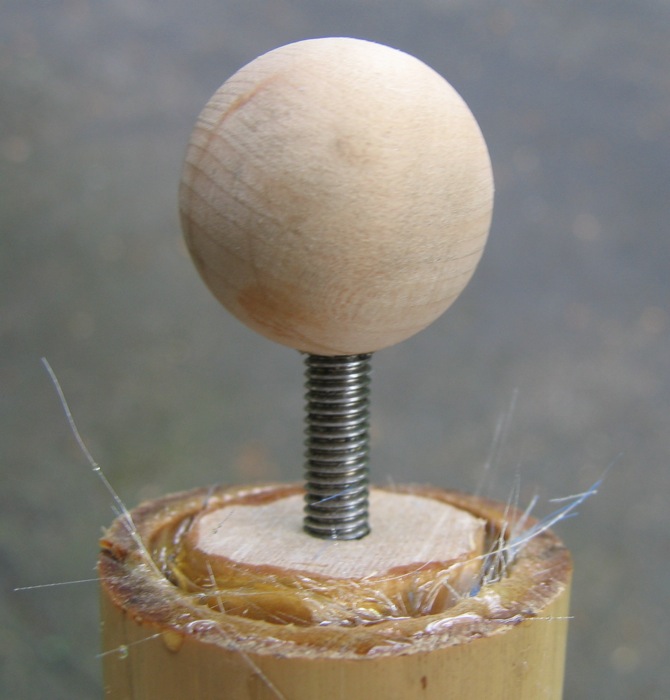
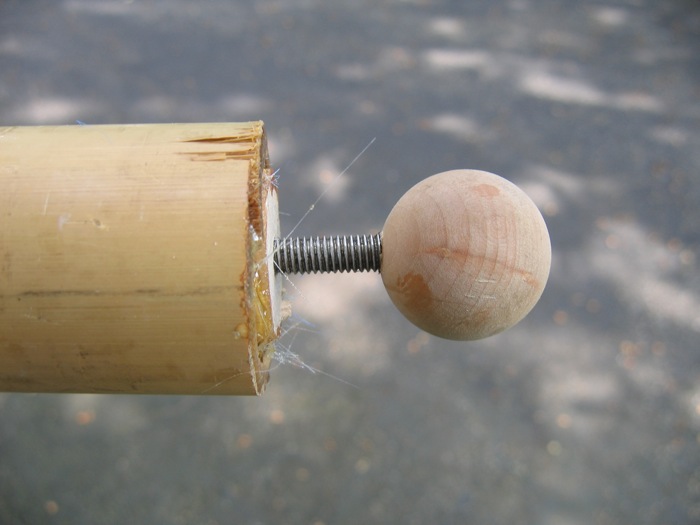
Advertisement







